What is Adaptive Seating?
Adaptive Seating provides positioning support and increased engagement with the child’s environment by providing optimal posture in a seated position. The general goals of adaptive seating include minimizing the development of alterations in body structure and function, decreasing fatigue, improving function, and enhancing participation and social engagement with family members and peers. These adaptations can be used in a variety of settings including home and school.
What is optimal posture?
Optimal posture includes sitting upright straight with head, neck, and shoulders in line, relaxed shoulders, resting elbows near the side body, slight inward curve in lower back, hips and knees at 90 degree angles, and feet resting on a firm surface.
Why is posture important?
The use of abdominal and back muscles allows us to maintain an upright position when sitting, whether this is on the floor or in a chair. If those muscles are not being activated, the child is putting unnecessary stress on bones, joints, ligaments, and muscles. That may cause increased pain down the road. Sitting posture is also a key component of engagement at home and school with family and peers. Upright posture allows for easier breathing, which allows for increased oxygen to the body and brain! Supporting feet on floor leads to increased stability, which in turn decreases fatigue and allows for increased concentration on task and engagement with activity.
How can you implement better sitting posture?
If your child is having difficulty engaging in tabletop activities, this may be due to decreased strength in postural muscles, as well as decreased balance. If your child is focusing on sitting upright in a chair, they are going to have difficulties engaging with their surroundings. Below are some adaptations you can use at home to provide additional supports to better engage in their surroundings.
Foot Support: When sitting in a chair, if your child is not touching the floor, you can bring the surface closer to them by placing a firm surface underneath. You can use a shoe box or plastic storage box to place under feet.
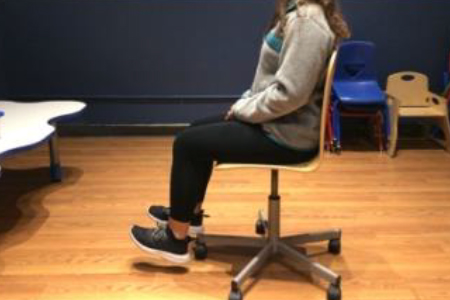
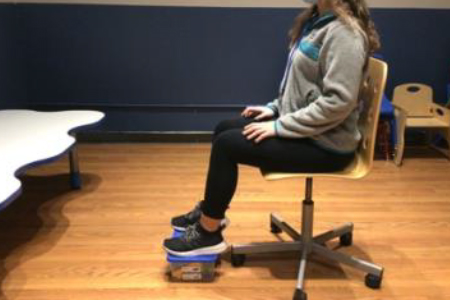
Wedge: If your child is slouching, including rounded back, forward shoulders, forward neck, and looking down, adding a wedge under their hips will help shift their weight forward. This causes the pelvis to tilt forward, causing the domino effect in the back body. You can use a wedge, or you can simply slide a towel or blanket just under your child’s hips to elevate them slightly.
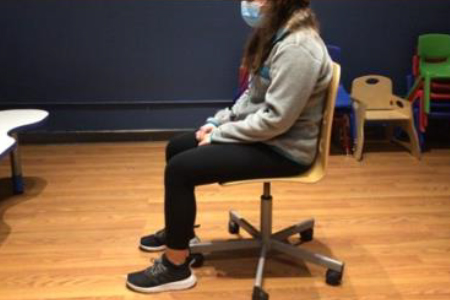
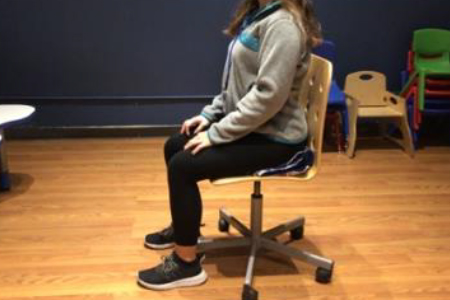
Trunk Supports: If your child is having difficulty maintaining an upright sitting position, you can add additional supports at the trunk to decrease the demand on their core muscles. You can do this by seating your child in a chair with a higher back. You can also add pillows or towel rolls on the side of the trunk in a chair with armrests.
Lumbar Support: If your child has decreased core strength, they may have difficulty maintaining an upright posture with an inward curve. To help maintain spinal alignment, you can add a small towel roll at the bottom of their back. This should be slightly higher than the hips, just below the waist, where the spine naturally curves.

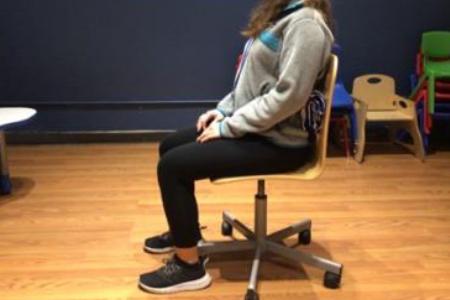
Elevate seat: If your child is sitting in a chair where the hips and knees are more than 90-degree angles, you can find another chair that is taller and use the prior adaptive supports to facilitate. If that is not an option, or if the table is too high, you can elevate the seat itself. You can do this by stacking a couple large books and having your child sit on them, or you can add a towel on the entire seat so your child’s bottom and thighs are at the same level.
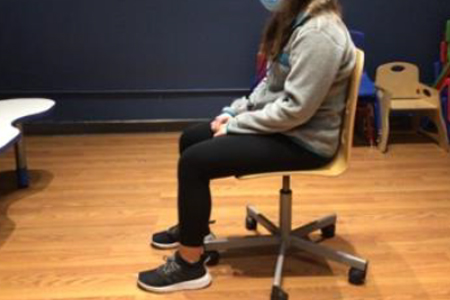

Floor Sitting
There are a variety of ways to sit on the floor including ring sitting, tailor sitting (“criss-cross”), side sitting, and long sitting. When sitting on the floor, optimal posture still includes sitting upright with head, neck, and shoulders in line, resting shoulders, and a slight inward curve in the lower back. If your child is having difficulty maintaining an upright posture, you can decrease the demand placed on their postural endurance muscles by providing more support.
Without Wedge vs With Wedge
Ring Sitting
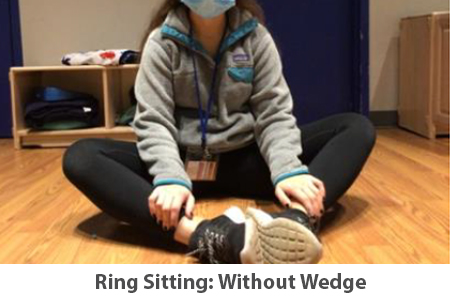
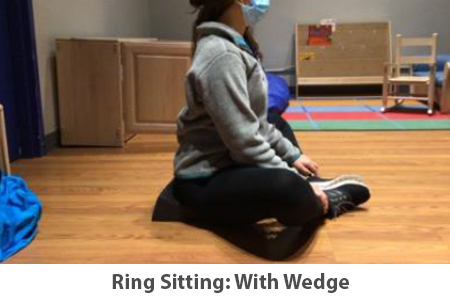
Tailor Sitting


Side Sitting
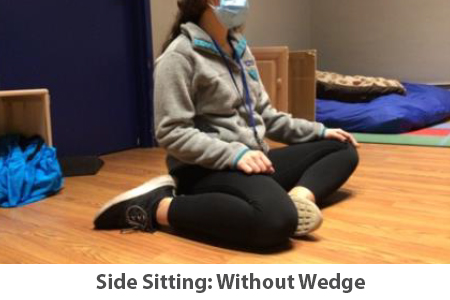
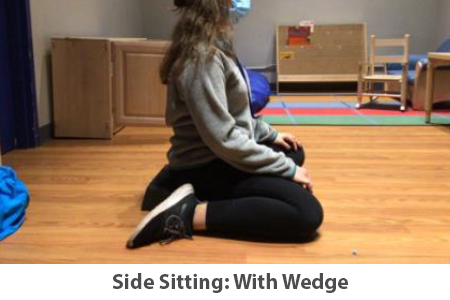
Long Sitting
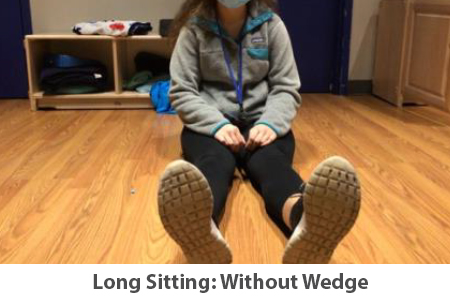
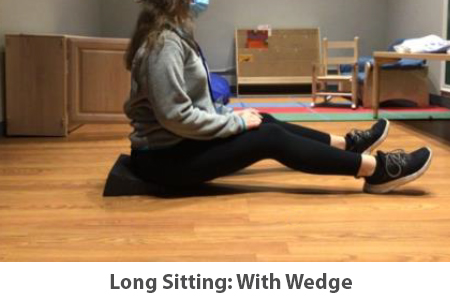
Elevate surface in floor sitting: If your child is sitting on the floor in a slouched position, you can add a wedge, pillow or a towel under their hips. Similar to sitting in a chair, this will shift their weight forward and cause the pelvis to tilt forward, causing an inward curve in lower back and improving upright posture.
If you have any questions about specific adaptive seating for your child, please reach out to your child’s Physical Therapist!

Blue Bird Day fosters socialization, sensory regulation, and pre-academic learning in children ages 2-7 years in therapeutic rotations that simulate preschool and kindergarten settings. Our compassionate therapists practice a relationship-based and family-centered approach, provide parent training, and collaborate on goals and individualized intensive treatment plans for your child.
We believe in a collaborative and multi-disciplinary team approach to therapy. A team of occupational therapists, speech-language pathologists, dietitians, developmental therapists, behavioral therapists, physical therapists, and therapeutic assistants are created for each child to ensure child and family are fully supported and the best possible results are achieved.
Options for individualized, group and virtual therapy sessions are available as well.
Want to learn more or you have a specific question? Feel free to connect with us here!



